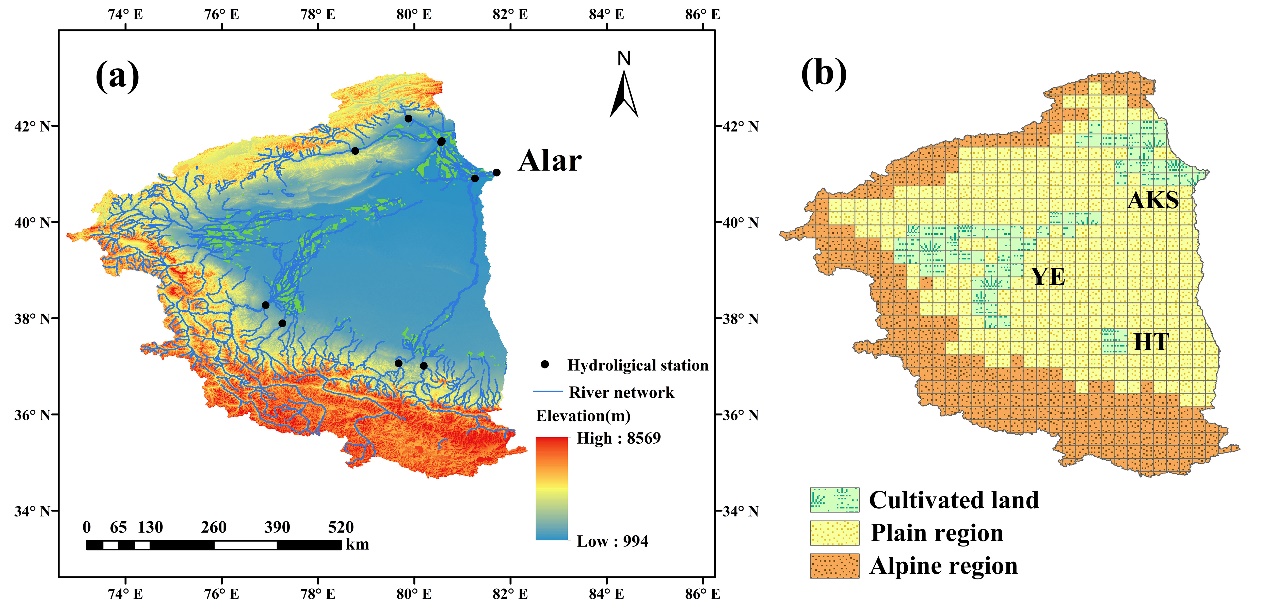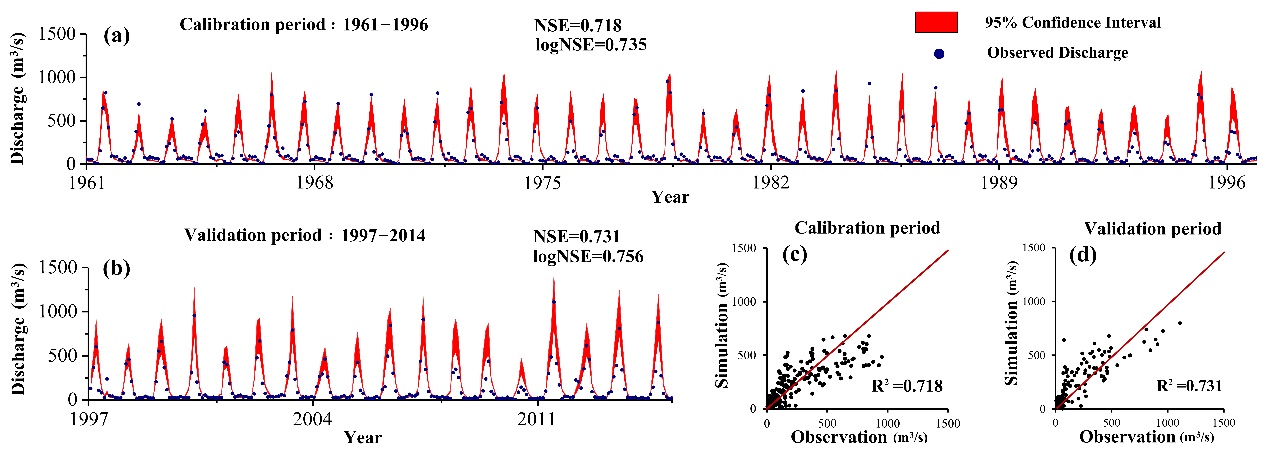The uncertainty of hydrological cycle processes has increased significantly under climate change, and global climate extremes are becoming more frequent. Flash droughts, as an extreme hydrological event, are more rapid in development and have shorter forecasting periods than traditional droughts, making it difficult to monitor and warn effectively. In the past decade, flash droughts have occurred frequently around the world, such as the 2012 flash drought in the US, the 2013 flash drought in the Yangtze River in China, and the 2015 flash drought in southern Africa, which have caused severe economic and agricultural losses.
The Tarim River Basin (TRB) is the largest inland river in China with an area of 1.02 million km2(Figure 1), and its water resources mainly come from glacial and snow in the headstream area, which is highly vulnerable to climate change. As the native river of the people in southern Xinjiangprovince, accurate identification of water resources evolution and flash drought characteristics in the headstream of TRB under climate change is important to ensure the sustainable development of the regional socio-economic and ecological environment. However, there are significant uncertainties in the evolution of water resources in the TRB under climate change due to the diversity of climate change, complexity of the hydrological cycle and the lack of observational data.

Figure 1. (a) Topography and river networks of the headstream area of the Tarim River. (b) Three cultivated areas: Aksu cultivated land (AKS), Hotan cultivated land (HT) and Yarkant cultivated land (YE). Two topography areas: plain region and alpine region.
To address the challenges of difficult construction of large-scale hydrological models and high uncertainty of hydrological simulation under climate change, the research group of Prof. Jichun Wu and Associate Prof. Xiankui Zeng constructed a hydrological model, i.e., variable infiltration capacity (VIC) model, of the headstream of TRB based on the national meteorological scientific data, combined the BP neural network surrogate model and Bayesian uncertainty analysis method to identify the model parameters. Ten representativeCoupled Model Intercomparison Project Phase 6 (CMIP6) climate models were used to identify the drought events in the historical period (1961-2014) and to project the water resources evolution and drought characteristics (frequency, duration, intensity) in the future period (2021-2100). In addition, the sources of uncertainty in flash drought predictions (CMIP model, shared socioeconomic pathway (SSP) scenario, and VIC model parameters) were quantitatively identified.
The main findings of the paper include: (1) The hydrological processes of study area are well described by the variable infiltration capacity model and Bayesian uncertainty analysis in the study area (Figure 2); (2) Compared with the plain region, the alpine region has higher flash drought frequency and intensity in the future (2021-2100); and (3) The CMIP6 model is the most important uncertainty source for flash drought projection (contributing 81%), followed by the SSP scenario (contributing 15%) and the VIC model parameters (contributing 4%) (Figure 3).

Figure 2. Plots (a) and (b) represent the projections of the discharge of Alar station by VIC model for the calibration and validation periods, respectively. Plots (c) and (d) represent the comparisons between the observed monthly streamflow and the mean monthly streamflow projection for the calibration and validation periods, respectively.
Figure 3. The spatial distributions of the contribution ratios of uncertainty sources (VIC model parameters, CMIP6 Model, and SSP) to the flash drought characteristics projection uncertainty
The above research work was published in the Journal of Geophysical Research: Atmospheres, a leading journal in the earth sciences, in March 2023, in an article entitled "Projection of Flash Droughts in the Headstream Area of Tarim River Basin Under Climate Change Through Bayesian Uncertainty Analysis"
Dr. Xiaohan Yu is the first author of the paper, Associate Prof. Xiankui Zeng is the corresponding author, and co-authors include Prof. Jichun Wu and Prof. Dong Wang, as well as Researcher Dongwei Gui from Xinjiang Institute of Ecology and Geography, Chinese Academy of Sciences, Urumqi, China, and Dr. Qiqi Gou from Hohai University, Nanjing, China. The research was supported by the Frontiers Science Center for Critical Earth Material Cycling, Nanjing University, Nanjing, China, and the National Natural Science Foundation of China.
Paper Information:Yu, X., Zeng*, X., Gui, D., Li, X., Gou, Q., Wang, D., & Wu, J. (2023). Projection of flash droughts in the headstream area of Tarim River Basin under climate change through Bayesian uncertainty analysis. Journal of Geophysical Research: Atmospheres, 128, e2022JD037634.
Paper Links:https://doi.org/10.1029/2022JD037634

